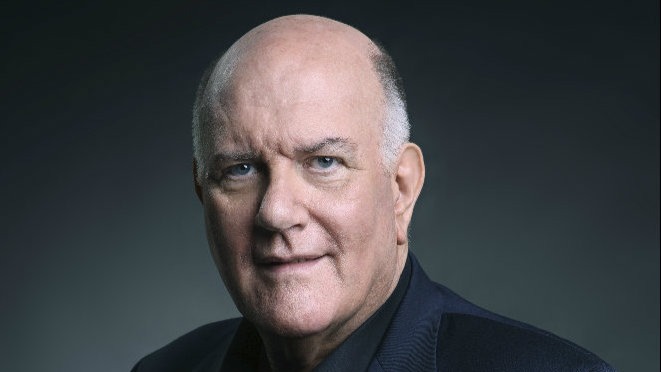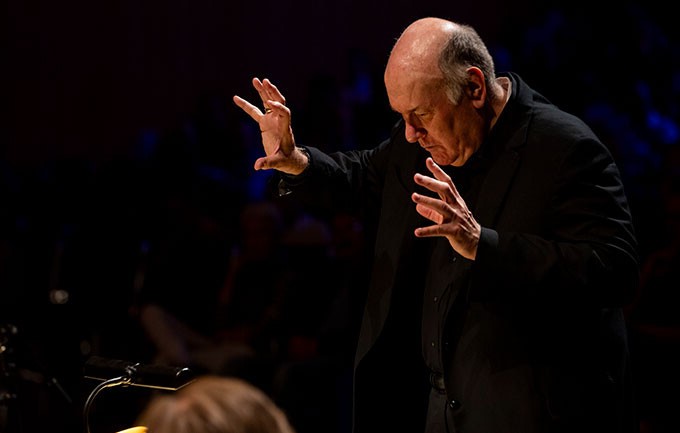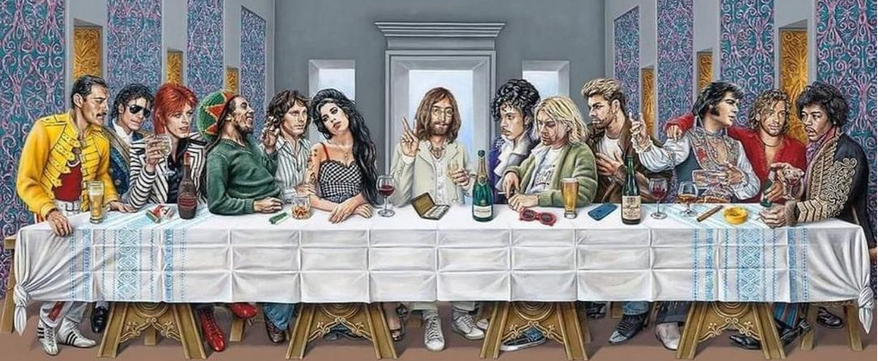
Jim McNeely: A Life in Jazz
Early Life and Musical Roots
Jim McNeely was born on May 18, 1949, in Chicago, Illinois, into a family where music was always close at hand. His mother sang in the church choir, his father played piano by ear, and his siblings were also musically inclined. Growing up in that environment, McNeely developed a natural affinity for sound, rhythm, and melody.
He began piano lessons at the age of six, and by eight he was already studying both technique and music theory in more structured settings. These early lessons provided him not only with fluency at the keyboard but also with an analytical approach to music that would serve him throughout his career. By his early teens, jazz had become his passion. He immersed himself in recordings of swing bands, bebop innovators, and modernists alike, absorbing both the spirit of improvisation and the structural elegance of jazz writing.
During high school, Jim McNeely attended Notre Dame High School for Boys in Chicago, drawn by its strong jazz program. The school maintained a full big band, and McNeely quickly became its pianist. He was more than just a player—by the age of sixteen he had already written his first arrangement for the ensemble. This dual interest in performance and writing would define the rest of his life.
After graduation, McNeely pursued formal studies in music at the University of Illinois, where he majored in composition. There he studied under teachers who emphasized theory and structure, while also continuing to hone his practical skills in jazz ensembles. His university years provided him with a rich musical laboratory: he played piano in various bands, composed for student ensembles, and absorbed a wide variety of influences ranging from European concert music to American jazz traditions.
Armed with a Bachelor of Music degree and a deepening artistic vision, McNeely made a decisive move in 1975: he relocated to New York City, the heart of the jazz world.
Arrival in New York and First Breakthroughs
New York in the mid-1970s was a crucible for jazz innovation. Jim McNeely arrived at a time when many of the great big bands were still active, while small-group jazz was also flourishing in clubs and lofts across the city. He began freelancing, taking on a wide range of gigs that tested his versatility. His ability to read, arrange, and improvise quickly earned him recognition among his peers.
His first major breakthrough came in 1978, when he joined the Thad Jones/Mel Lewis Jazz Orchestra as pianist. This ensemble, which played every Monday night at the Village Vanguard, was one of the most respected large jazz groups in the world. McNeely’s role as pianist placed him at the heart of the band’s sound, and his sensitive comping, daring solos, and keen awareness of orchestral texture distinguished him immediately. His years with the band also gave him firsthand experience with large-ensemble writing of the highest order, reinforcing his interest in arranging and composition.
In 1981, Jim McNeely stepped into another prestigious role, joining saxophonist Stan Getz’s quartet as pianist and composer. The experience of working with Getz—a lyrical and highly demanding musician—helped McNeely refine his skills as a soloist and small-group player. He remained with Getz for four years, touring internationally and gaining recognition not only as an accompanist but also as a composer whose works could stand alongside those of the great saxophonist.
By the late 1980s, McNeely’s name was firmly established in the jazz world. His career balanced small-group playing, large-ensemble arranging, and increasing opportunities to lead his own projects.
Expanding Horizons: Performer, Arranger, and Conductor
In the 1990s, Jim McNeely’s career took on an even broader scope. From 1990 to 1995, he was the pianist for the Phil Woods Quintet, further strengthening his reputation as a consummate small-group player. His work with Woods, a fiery and expressive alto saxophonist, showed his ability to combine subtlety with drive, intellect with passion.
In 1996, McNeely returned to what had by then become the Vanguard Jazz Orchestra—the direct descendant of the Thad Jones/Mel Lewis ensemble—as both pianist and composer-in-residence. This position allowed him to make a lasting contribution to the band’s repertoire. Week after week, his compositions and arrangements gave the orchestra new material that stretched its capabilities and delighted audiences. His charts often blended complexity with swing, modern harmonic ideas with deep lyricism.
Meanwhile, Jim McNeely’s reputation as an arranger and conductor was spreading internationally. He became especially influential in Europe, where state-supported big bands offered him platforms to realize ambitious projects. He served as chief conductor of the Danish Radio Big Band from 1998 to 2002, shaping its artistic direction and composing new works. Later, he became closely associated with the HR Big Band in Frankfurt, where he worked both as composer-in-residence and chief conductor. He also collaborated with other major European ensembles, including the WDR Big Band in Cologne, the Metropole Orchestra in the Netherlands, and orchestras in Stockholm and Switzerland.
.
These collaborations highlighted McNeely’s ability to write for large ensembles with both structural clarity and imaginative freedom. He treated the big band not as a relic of the swing era but as a living, evolving orchestra capable of as much nuance as a symphonic ensemble.
Ensembles of His Own
In addition to his work with established orchestras, Jim McNeely maintained his own ensembles. He led trios that allowed him to explore intimate, conversational approaches to jazz piano. He also formed a tentet, a ten-piece band that offered a middle ground between the openness of small groups and the richness of big bands. His tentet projects yielded some of his most personal compositions, combining adventurous harmonies, intricate counterpoint, and space for improvisation.
One of his major recorded achievements came with the album Barefoot Dances and Other Visions (2018), written for the Frankfurt Radio Big Band. The album was widely praised for its inventiveness and was nominated for a Grammy Award for Best Large Jazz Ensemble Album. Earlier, his solo recital Jim McNeely at Maybeck (1992) had already demonstrated his pianistic brilliance, as he performed pieces that pushed the boundaries of improvisation, including a daring exploration of a standard in all twelve keys.
Musical Style and Aesthetic
Jim McNeely’s music was distinguished by several recurring traits:
- Orchestral Color – His arrangements often displayed a painter’s sense of texture, with careful voicing and creative use of instrumental timbres. He could blend brass, reeds, and rhythm in unexpected ways that illuminated hidden possibilities in the ensemble.
- Harmonic Sophistication – Whether at the piano or in his compositions, McNeely had a taste for harmonic exploration. His progressions were adventurous without losing coherence, offering performers and listeners alike a journey through shifting tonal landscapes.
- Integration of Structure and Improvisation – He consistently sought a balance between tight writing and open freedom. Soloists in his works often found themselves framed by structures that both supported and challenged them.
- Lyricism Amid Complexity – Despite his intellectual bent, McNeely was never dry. His melodies sang, his voicings shimmered, and his pieces often contained moments of striking emotional directness.
- Respect for Tradition with Forward Vision – McNeely honored the jazz lineage—swing, bebop, and beyond—while always pushing the music into fresh territory. He was both a guardian and an innovator.
Teaching and Mentorship
Beyond his achievements as a performer and composer, McNeely left a deep imprint as an educator. He served on the faculties of several leading institutions, including Manhattan School of Music, William Paterson University, and New York University. As Professor of Graduate Jazz Composition at Manhattan School of Music, he mentored generations of young composers, guiding them in the craft of orchestration, form, and improvisational design.

.
From 1991 to 2015, Jim McNeely directed the BMI Jazz Composers’ Workshop, a crucial incubator for emerging jazz writers. His role there was transformative: he not only provided technical instruction but also encouraged students to find their unique voices, just as he had found his own.
He also traveled widely to conduct clinics, lead workshops, and serve as guest conductor at festivals. Musicians who studied with him often recalled his combination of rigor and encouragement, his ability to dissect complex scores while never losing sight of the human and emotional side of music.
Recognition and Awards
Over his career, Jim McNeely was nominated for numerous Grammy Awards, both for his individual projects and as a member of ensembles. In 2008, as part of the Vanguard Jazz Orchestra, he won a Grammy for the album Monday Night Live at the Village Vanguard. His Barefoot Dances and Other Visions later received a Grammy nomination as well.
Critics and colleagues praised him consistently. The New York Times described his compositions as exhilarating, while DownBeat magazine characterized them as profound. Fellow musicians regarded him as a master craftsman, one who could turn the big band into an instrument of extraordinary subtlety and power.
Later Years and Passing
In his later years, McNeely remained active as composer, conductor, and teacher, even as his health began to decline. He eventually retired to Owls Head, Maine, after long residencies in Montclair and Maplewood, New Jersey. Despite a diagnosis of cancer, he continued to compose and mentor younger musicians until his final years.
On September 26, 2025, Jim McNeely died in New York City at the age of 76. His death marked the end of an era, but his music, recordings, and teachings ensure his influence will continue long into the future.
Legacy
Jim McNeely’s career embodied the best of modern jazz: artistry rooted in tradition but always striving forward, versatility across piano, composition, and conducting, and a commitment to nurturing younger voices. His contributions can be understood in several dimensions:
- As a Pianist: He combined elegance, daring, and a searching quality that made him a compelling voice in both small and large settings.
- As a Composer/Arranger: He expanded the possibilities of the jazz orchestra, showing that it could remain a vital, contemporary medium.
- As a Conductor: He shaped ensembles on both sides of the Atlantic, leaving a particular mark on European big-band culture.
- As a Teacher: His mentorship shaped the trajectory of countless younger musicians who will continue to carry his ideas forward.
McNeely’s life’s work reflects the idea that jazz is not static but a living art form. Through his music, his teaching, and his leadership, he ensured that the jazz tradition remains vibrant, evolving, and deeply human.
Check out Jim McNeely on Amazon by clicking here.
If you found this interesting please share it with your friends and family, and check out some of our other articles on Musicians who Died in 2025.
.

